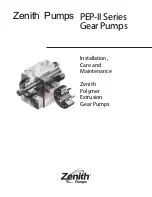
1 Function
1.1 Input voltage range
¡
The range is from AC85V to AC264V or DC120V to DC370V
(please see SPECIFICATIONS for details).
¡
In cases that conform with safety standard, input voltage range is
AC100-AC240V (50/60Hz).
¡
If input value doesn’t fall within above range, a unit may not operate in
accordance with specifications and/or start output voltage hunting or fail.
If you need to apply a square waveform input voltage, which is
commonly used in UPS and inverters, please contact us.
¡
When the input voltage changes suddenly, the output voltage ac-
curacy might exceed the specification. Please contact us.
¡
Operation stop voltage is set at a lower value than that of a stan-
dard version (derating is needed).
-
Use Conditions
Output
LFP100F
30W
LFP150F
50W
LFP240F
80W
LFP300F
100W
Input AC50V or DC70V
Duty 1s/30s
1.2 Inrush current limiting
¡
An inrush current limiting circuit is built-in.
¡
If you need to use a switch on the input side, please select one
that can withstand an input inrush current.
¿
LFP100F, LFP150F
¡
Thermistor is used in the inrush current limiting circuit. When you
turn the power ON/OFF repeatedly within a short period of time,
please have enough intervals so that a power supply cools down
before being turned on.
¿
LFP240F, LFP300F
¡
Thyristor technique is used in the inrush current limiting circuit.
When you turn power ON/OFF repeatedly within a short period of
time, please have enough intervals so that the inrush current limit-
ing circuit becomes operative.
¡
When the switch of the input is turned on, the primary inrush cur-
rent and secondary inrush current will be generated because the
thyristor technique is used for the inrush current limiting circuit.
1.3 Overcurrent protection
¡
An overcurrent protection circuit is built-in and activated over
101% of the peak current. A unit automatically recovers when a
fault condition is removed.
Please do not use a unit in short circuit and/or under an overcur-
rent condition.
¡
Hiccup Operation Mode
Hiccup operation for overcurrent protection is included in a part of
series. When the overcurrent protection circuit is activated and the
output voltage drops to a certain extent, the output becomes hic-
cup so that the average current will also decrease.
1.4 Overvoltage protection
¡
An overvoltage protection circuit is built-in. If the overvoltage pro-
tection circuit is activated, shut down the input voltage, wait more
than 3 minutes and turn on the AC input again to recover the out-
put voltage. Recovery time varies depending on such factors as
input voltage value at the time of the operation.
¡
In option -R2, overvoltage protection is removed by toggling ON/
OFF signal of remote control.
Remarks :
Please avoid applying a voltage exceeding the rated voltage to an
output terminal. Doing so may cause a power supply to malfunc-
tion or fail. If you cannot avoid doing so, for example, if you need
to operate a motor, etc., please install an external diode on the
output terminal to protect the unit.
1.5 Thermal protection
¡
A thermal protection circuit is built-in.
The thermal protection circuit may be activated under the follow-
ing conditions and shut down the output.
1
When a temperature continue to exceed the values determined
by the derating curve.
2
When a current exceeding the rated current is applied.
3
When convection stops.
4
When peak load is applied in conditions other than those shown
in Section 5.
If the thermal protection circuit is activated, shut off the input volt-
age and eliminate all the overheating conditions. To recover the
output voltage, have enough time to cool down the unit before
turning on the input voltage again.
1.6 Output voltage adjustment range
¡
Adjustment of output voltage is possible by using potentiometer.
1.7 Output ripple and ripple noise
¡
Output ripple noise may be influenced by measurement environ-
ment, measuring method fig.1.1 is recommended.
+Vout
-Vout
Load
150mm
C
2
C
1
Osiloscope/
Ripple noise meter
Bw:20MHz
Differential probe
+
C
1 :
Film capacitor 0.1μF
C
2 :
Aluminum electrolytic capacitor 22μF
Fig.1.1 Measuring method of Ripple and Ripple Noise
Remarks :
When GND cable of probe with flux of magnetic force from power
supply are crossing, ripple and ripple noise might not measure
correctly.
Please note the measuring environment.
*
Please avoid using continuously
for more than 1 second under
above conditions. Doing so
may cause a failure.
AC-DC Power Supplies Open Frame/ Enclosed Type
Instruction Manual
LFP-14
June 26, 2020


























